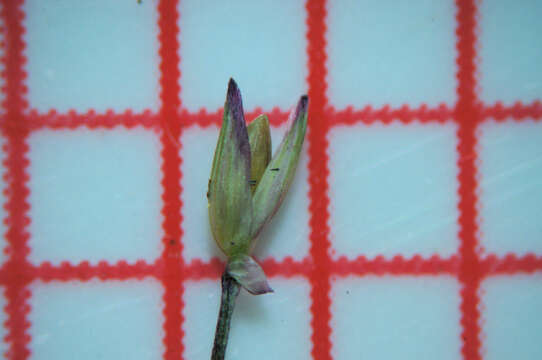Panicum decompositum spikelet24 NWS - Flickr - Macleay Grass Man

Descrição:
Description: Native warm-season perennial densely tufted C4 grass; stems grow to 1 m tall. Leaves are blue-green with a distinct whitish midvein and the nodes are hidden by leaf sheaths. Flowerheads are spreading open panicles to 40 cm long. Spikelets are 2-flowered, 2.5-3.5 mm long and sparsely paired; lower glume is 20-30% of the spikelet’s length; lower lemma is sterile; upper lemma is smooth and shiny. Flowers in summer and autumn. Found in native pastures, woodlands or disturbed areas (e.g. roadsides) on a range of soil types, but especially heavy clays and alluvial soils; most common in the Upper Hunter, North West Slopes and along the Plains. Native biodiversity. Tolerates flooding, but has poor drought tolerance. Establishes easily from seed; seed is spread when flowerheads break off at maturity and blow around. Hays-off in winter, but quickly regrows in spring and produces a good bulk of highly palatable feed after heavy warm-season rains or flooding. Increases under moderate stocking, but decreases under heavy grazing; its absence may indicate overgrazing or severe drought. Use sufficient grazing pressure to prevent plants becoming tall, rank and less palatable. This can be difficult to achieve in good summers when an excess of feed is most likely to be produced. Date: 16 February 2016, 09:40. Source: Panicum decompositum spikelet24 NWS. Author: Harry Rose from Dungog, Australia. Camera location 31° 09′ 17.32″ S, 150° 52′ 05.25″ E : View all coordinates using: OpenStreetMap - Google Earth: -31.154811; 150.868125.
Incluído nas seguintes páginas:
- Life
- Cellular
- Eukaryota (Eucariontes)
- Archaeplastida
- Chloroplastida
- Streptophyta
- Embryophytes
- Tracheophyta
- Spermatophytes (Spermatophyta)
- Angiosperms
- Monocots
- Commelinids
- Poales
- Poaceae (grama)
- Panicum
- Panicum decompositum
Esta imagem não aparece em nenhuma coleção.
Informação de origem
- licença
- cc-by-3.0
- direitos autorais
- Harry Rose
- criador
- Harry Rose
- fonte
- Flickr user ID macleaygrassman
- original
- arquivo de mídia original
- visite a fonte
- site do parceiro
- Wikimedia Commons
- ID


